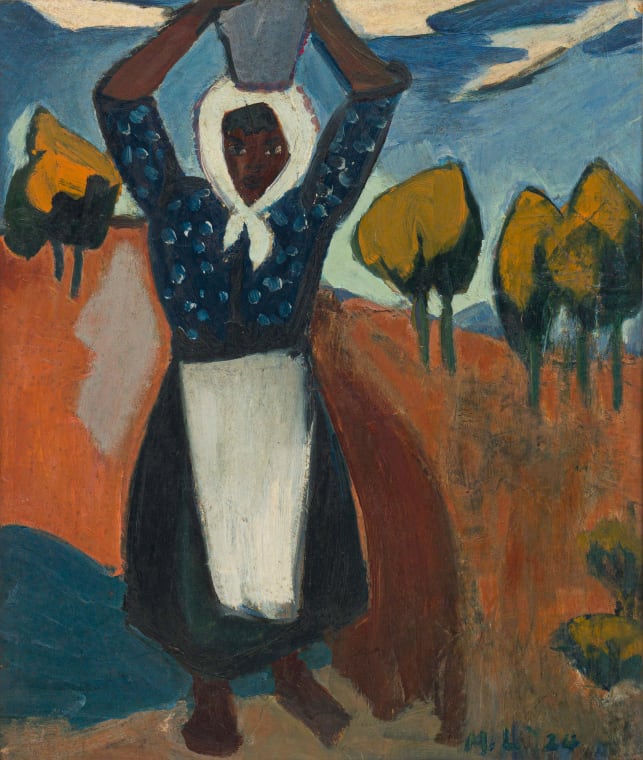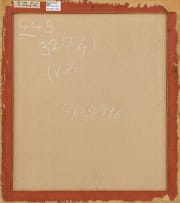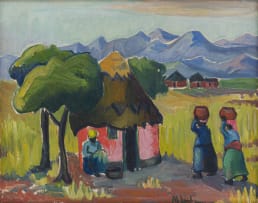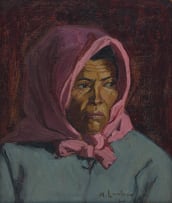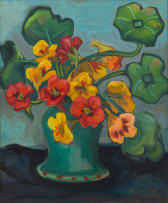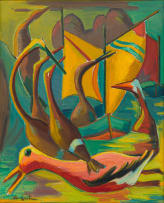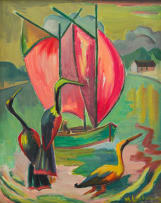Johannesburg Auction Week
Live Virtual Auction, 7 - 9 November 2022
Modern and Contemporary Art, Part II
About this Item
signed with the artist's initials and dated '24
Notes
Maggie Laubser holds a place of courage and innovation in the history of South African art. Along with Irma Stern, she is considered to have played an important role in introducing Expressionism to South Africa. Apart from a few discerning collectors and dealers, Laubser's work was initially met with intense ridicule and criticism for the simplified style inspired by her exposure to German Expressionism during her time in Europe. Painted in the year that Laubser returned to South Africa, Washer Woman is a brave example of Laubser's commitment to artistic freedom and focuses on using figures and landscapes as vehicles for spiritual expression. There is a distinct lack of shadow in Laubser's work, as she preferred to bathe everything in light to reflect ideas of spiritual upliftment. This concept, evident in this early work, eventually crystalised in the naming of her home, Altyd Lig [Always Light].
Born in the Western Cape, Laubser's fascination with people communing with nature manifests in many agricultural and harvest scenes. The Washer Woman is situated in a simplified landscape that is likely situated in the artist's childhood home of Malmsbury, as she returned to her father's farm after leaving Europe, famous for the golden fields of wheat. Laubser's clear visual vocabulary is established even in this early work, a vibrant example of the bold style that would win her such wide acclaim almost a decade later.
Literature
Dalene Marais (1994) Maggie Laubser: Her Paintings, Drawings and Graphics. Johannesburg and Cape Town: Perskor. Illustrated on page 176, catalogue number 474.
